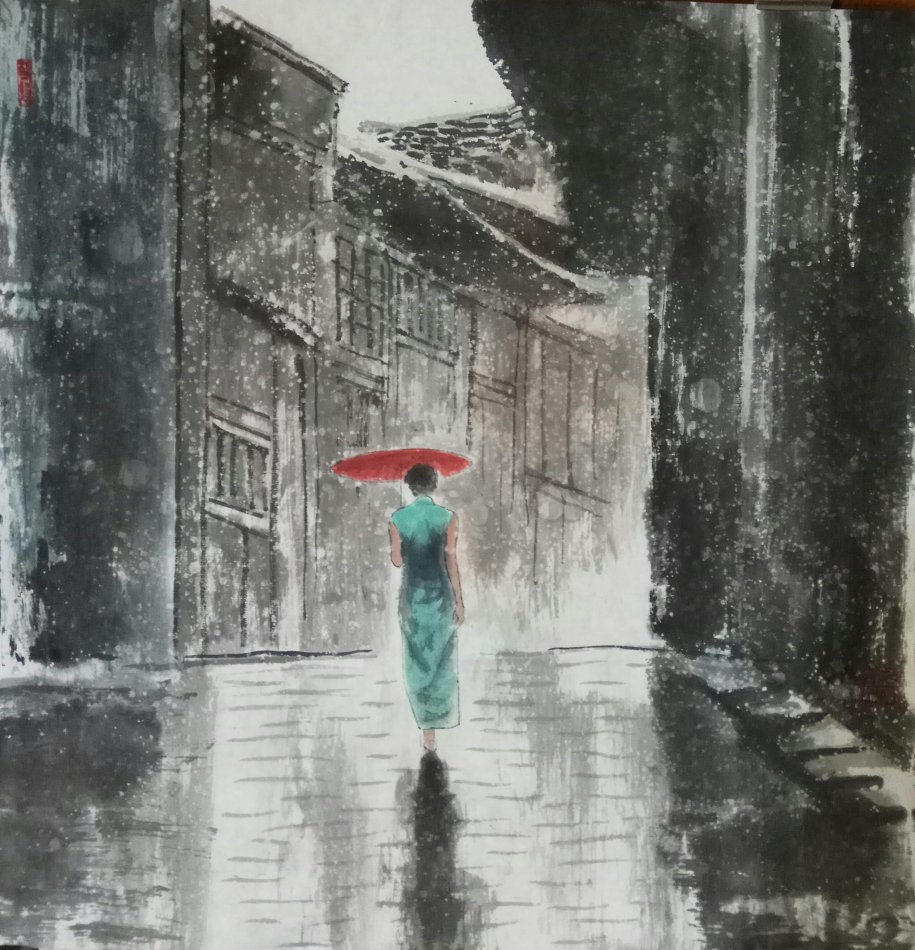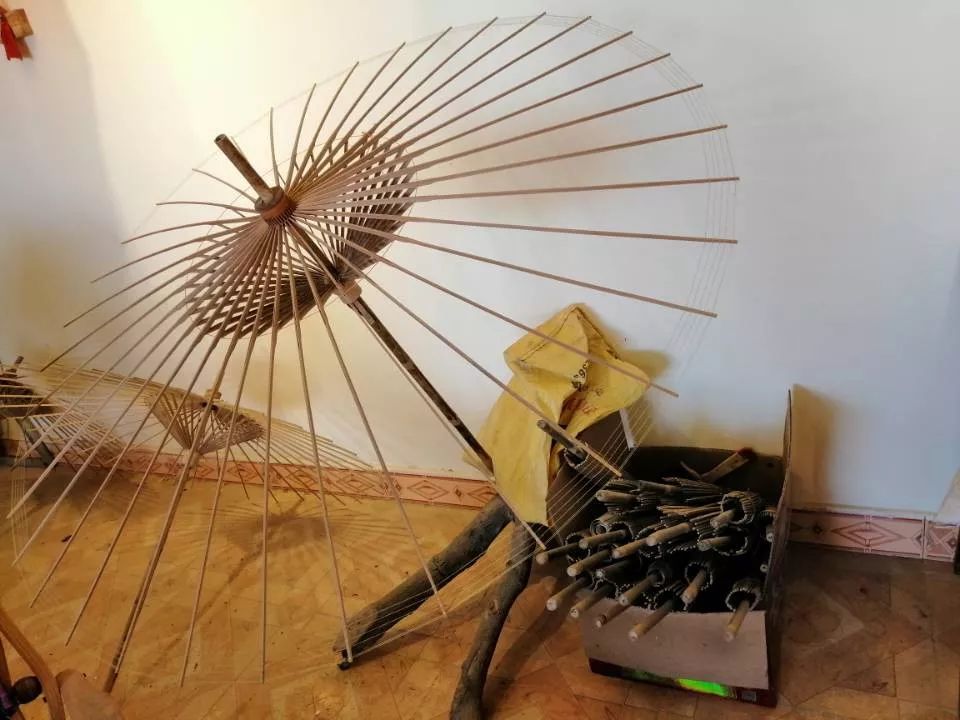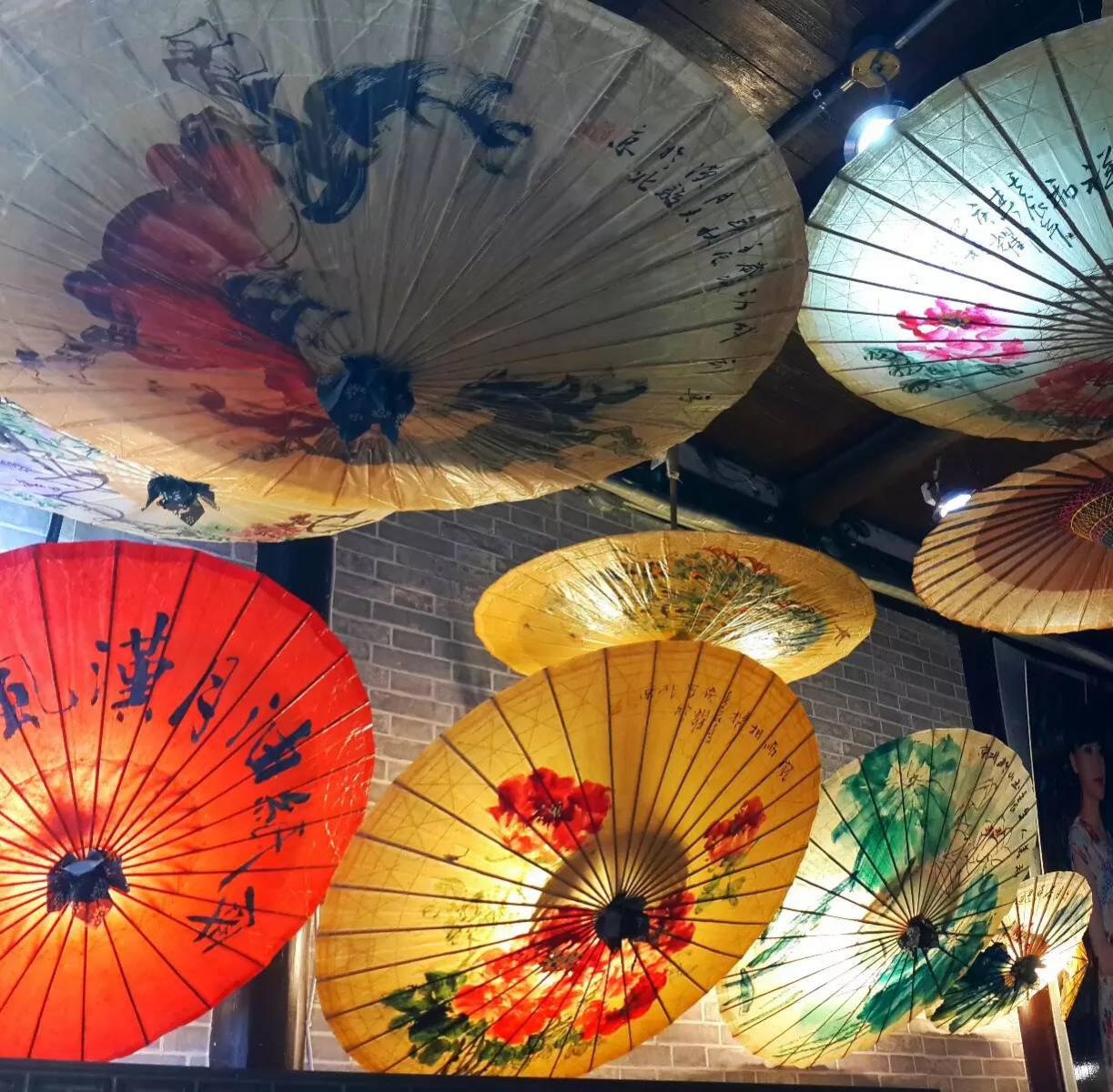Binyang Oil-paper Umbrella: Seeking Romance in the Misty Rain
Publication time:2022-04-28 15:17:48
By Chen Zhiying
Holding up an oil-paper umbrella, I loiter aimlessly in the long, long and lonely rainy alley, hoping to encounter a lilac-like girl gnawed by anxiety and resentment.” Reading these gloomy and dreamy lines written by Chinese poet Dai Wangshu in the poem A Lane in the Rain, we seem to be able to picture the scene in our minds — tinging with a sense of slight sadness, while penetrating an atmosphere of bountiful romance. All these delicate feelings are hidden in a small oil-paper umbrella. In the south of Guangxi Zhuang Autonomous Region, there exists a less-known county which has produced the oil-paper umbrellas for more than three hundred years called Binyang. With unique styles and exquisite patterns, Binyang oil-paper umbrellas are favored by tourists and brim with new vitality in modern days.

Origins of the oil-paper umbrella
The earliest umbrella was created by the sister of Lu Ban (507 BC-444 BC), a famous Chinese craftsman in the late Spring and Autumn period. She was worried that her brother would get soaked in the rain when working outside, so she came up with an idea, which is to cut the bamboo into thin sticks and put animal skins and furs on the frame woven by the thin sticks. This invention can be closed into a cane and opened as a cone, resembling the roof of the pavilion. It was light, portable, and beautiful, serving as a good shelter from the rain. Until the Eastern Han Dynasty (25 AD-220 AD), after Cai Lun invented paper, the oil-paper umbrella was born. They soon became very popular, especially among literati and refined scholars who are romantic and sentimental. They loved to write poems and draw on the umbrella surface to demonstrate artistic skills and literary tastes, or to convey their feelings. It is because of this that a lifeless oil-paper umbrella starts to bear deep emotions and endow with a rich life. Elements from traditional Chinese ink paintings, such as birds, flowers, human figures, landscapes, and calligraphic characters, could also be found on the oil-paper umbrella as popular decorative patterns.
Complex techniques involved
The traditional craft of making a Binyang oil-paper umbrella is very complicated. From material selection to the end product, the whole handcraft production involves more than 120 procedures. In general, it can be divided into the following four steps. The first step, and also the most important one, is selecting bamboo. To make a good Binyang oil-paper umbrella, you must choose high-quality materials. Bamboo that has grown in the mountains for more than 3 years is a good choice for it is both strong and pliable, featuring great resilience, and not easy to have pests inside. The next step goes like this: crafting the selected bamboo and soaking them in water, after that, they will be dried under the sun and assembled to form a frame. Then, it is time to make the paper shade. The paper shade itself is made of a special and fibrous paper, which first has to be impregnated in the tung oil, rendering its the quality of high transparency. After that, craftsmen will carefully stick it to the umbrella ribs one by one.

The whole process is at a slow speed and requires precise handwork since the wrinkles need to be smoothed from time to time. The final step is to expose the oiled umbrella to sunlight and, once it is dried, put on decorations. The artistic decoration, being one of the highlights of the Binyang oil-paper umbrella, involves many efforts and work, requiring a huge passion, patience, and carefulness. A well-finished good Binyang oil-paper umbrella can withstand the ravages of wind and rain, just as its decorations can resist the tendency to fade over time and make tourists indulge in a train of thoughts.
Rich meanings contained
Love happens in the encounter brought by falling rain. The best-known story about the oil-paper umbrella is the Legend of the White Snake, in which the main characters, namely Xu Xian and Bai Suzhen (a white snake nymph), become known to each other due to an oil-paper umbrella (Xu lent his umbrella to Bai while it was raining) and they gradually fell in love and were eventually married. The romance hidden in the Binyang oil-paper umbrella is in line with the rich meanings it contains. Because, “oil” (in Chinese it pronounced as you) and “have” are homonyms, and paper is a homonym for sons in Chinese. Therefore, Binyang oil-paper umbrella boasts the connotation of having sons early. The Chinese character umbrella in the original complex form contains five people, conveying the meaning of having many sons and grandsons. Also, the umbrella opens into a round shape, symbolizing a happy and complete life and a good marriage. That’s why parents will give an oil-paper umbrella to their daughter as one of the dowries. With exquisite appearance and auspicious meanings, the Binyang oil-paper umbrella won itself a place in the list of intangible cultural heritage in 2013.

Although the Binyang oil-paper umbrella is no longer commonly used in rainy days, the beauty and elegance embedded in it will never disappear from people’s minds. The rainy season has already come. Hold up a Binyang oil-paper umbrella and meander along a winding alley in drizzling rain with your loved one.

